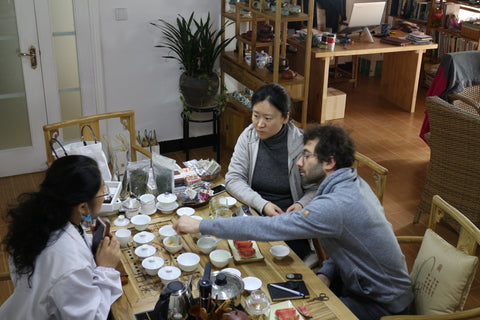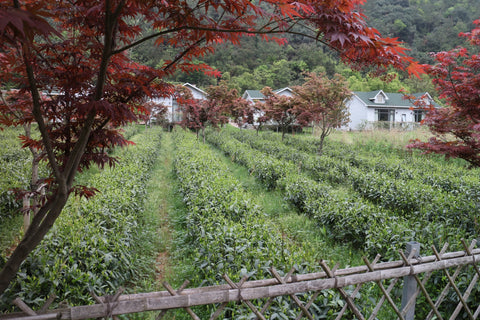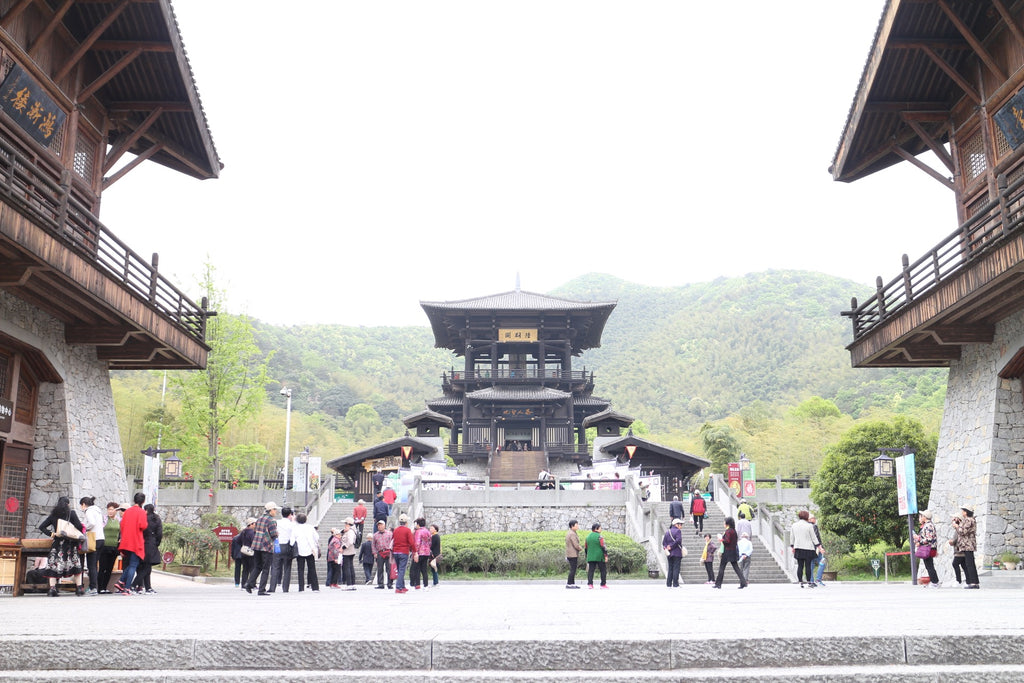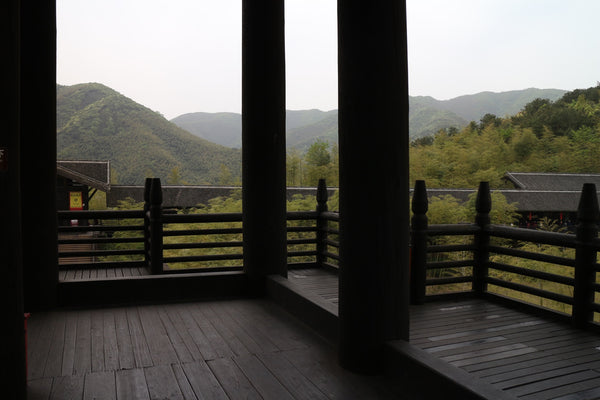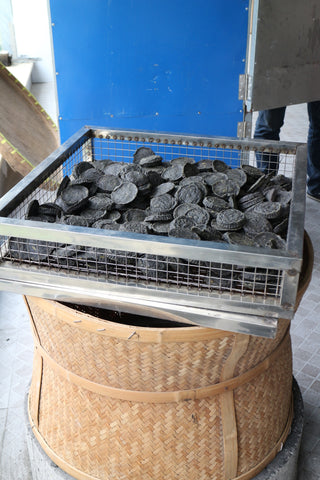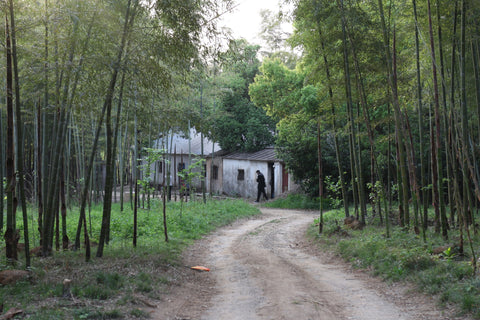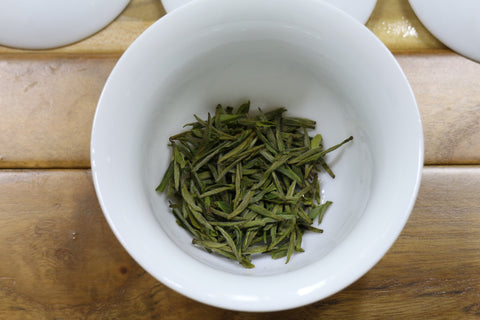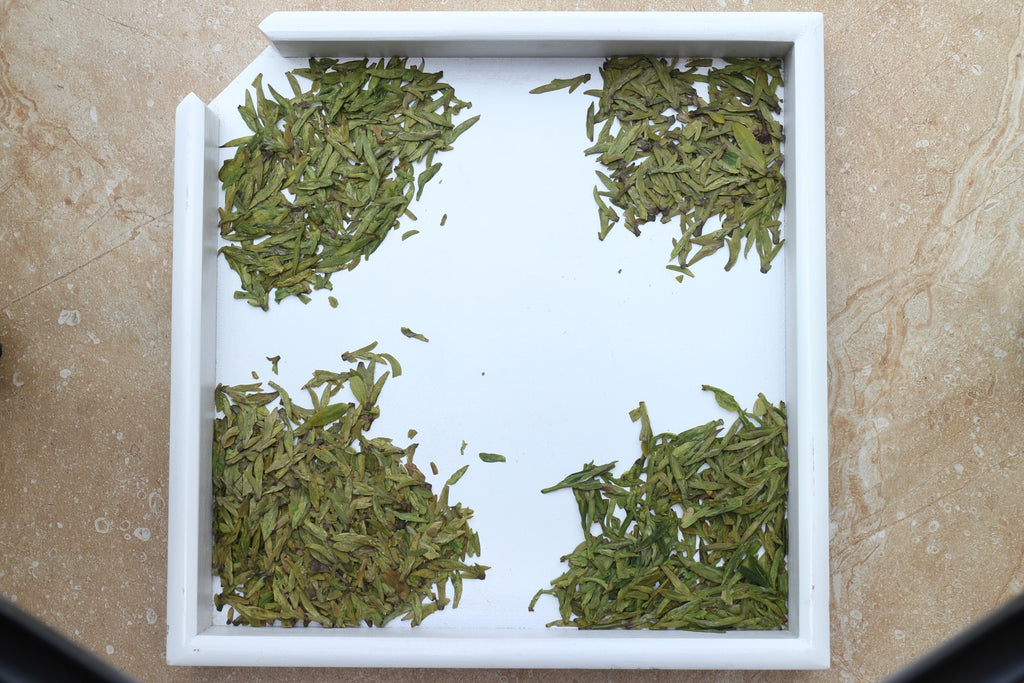A Thousand-Year-Old Tea
Changxing, 16th April 2018
It is half past nine in the morning, and after two hours on the train, we have arrived at Changxing, a town on the western shore of Lake Taihu, in the north of Zhejiang. With me is Qin; finally, after years of having known her, she is finally able to take a day off to travel with me—with two shops to manage, both open seven days a week, it is not easy.
We are there to meet Yimin, a friend of a friend of a friend (who else?). The only things we know about her are that she produces Guzhu Zi Sun, a renowned green tea, and is a good contact.
We visit the headquarters of her company. Other than the office there is a tea warehouse, including a cold room as big as an apartment, and a room in which some employees pack tea. I am only allowed to photograph them from outside: to enter requires a white coat, hairnet, and face mask. Obviously, it's not without a tasting room, where Yimin welcomes us by preparing some of her teas. She is very congenial and easygoing—I can't yet imagine the enormity of the business she has created, but I will soon come to realise it.

An attendant packs tea.
With Yimin & Qin at the Gongfu Cha table.
For lunch, we leave town for Yimin's park. To call it a park is, in fact, reductive: the natural centre of a narrow valley between two mountains, it contains tea fields, vacation homes, restaurants, bars, and even a little zoo. We dine at her restaurant; delicious food accompanied by extremely sweet green tea, one which even after a half-hour of infusions shows no sign of becoming bitter!

In Yimin's park. Left: Qin, Yimin, and her son. Right: tea fields and vacation homes.
After lunch we go to the centre of Guzhu, a municipality of Chiangxing, to visit the memorial centre erected in memory of Lu Yu, the first writer in history to have dedicated an entire book to tea (Cha Jing, 'the Book of Tea'), in which he elegises Guzhu Zi Sun, the green tea I have come in search of.
At that time, in the eighth century, loose-leaf tea did not yet exist; the leaves were ground and compressed into tiny discs (cha bing). Before preparing the tea, the discs were crumbled into pieces, which were then boiled in water together with salt and spices. The result was more like a soup than tea as we know it today. More than a millennium has passed and the customs have changed, but Guzhu Zi Sun is still produced every spring.

Memorial centre in honour of Lu Yu. Qin bows to the statue of the writer. View of the surrounding mountains.
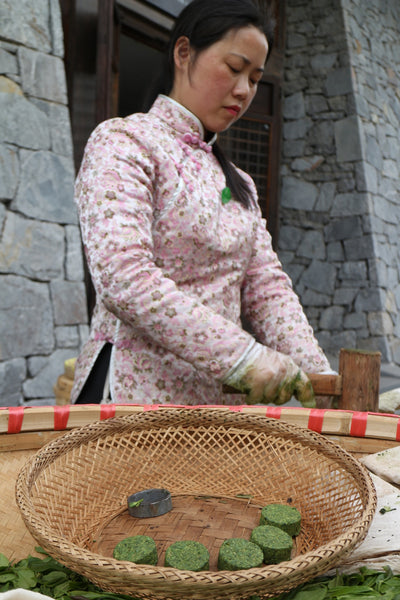
Recreation of the production of Guzhu Zi Sun during the time of Lu Yu (eighth century). The leaves were steamed, ground, compressed into discs, and and dried over hot coals.
After the centre, we visit a family-run tea producer. They process the leaves in an unconventional, experimental way, and refine new techniques. We taste three teas, all from the leaves of the wild trees that grow in the surrounding mountains. The most unusual one was a tea with yellow leaves, steamed for 12 minutes before being dried in a coal-fired oven. It is intense and full-bodied, the taste reminiscent of hay with notes of ripe fruit.
They also produce compressed tea, again deviating from traditional methods. The leaves are compressed in moulds into the shape of small tarts; these little cakes are then pierced on one side and dried over hot ash for seventy hours. Unfortunately, we are unable to try the tea, because the drying discs are still too soft.
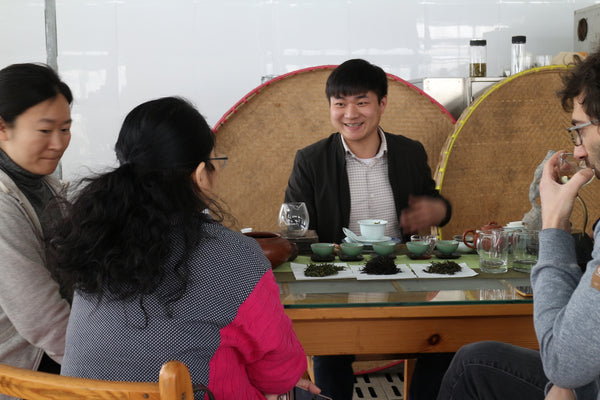
Tasting of experimental wild teas, and compressed tea cakes drying over hot ash.
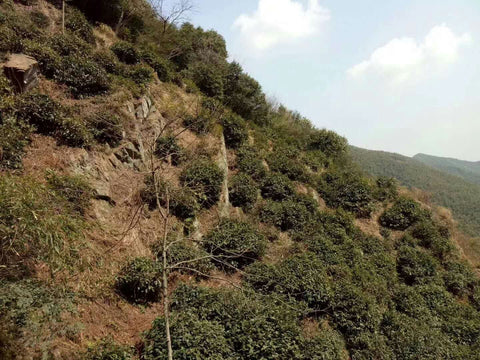

Wild tea bushes in the mountains of Guzhu.
Before sunset, we head to one of Yimin's farms. Here, they produce Guzhu Zi Sun and Bai Cha (Guzhu is quite close to Anji and also produces a Bai Cha with the same plants, 'bai ye yi hao'). As far as the eye can see, tea fields alternate with groves of bamboo.
'Zi Sun' means 'purple bamboo shoots'. The name is derived from the appearance of the variety of local plants. The shape of the sprouts resemble those of bamboo, with a purple colour, and only when they are fully grown do they become completely green.

Tea fields and bamboo groves.

The purple-tinged leaflets of the plant used for Guzhu Zi Sun.
Changxing, 17 April 2018
In the morning, I return to Yimin's company to taste and select teas for Nannuoshan. With a selection of over 600 different teas, it's no easy choice. She selects a few dozen; I divide these into categories and begin to prepare them.
I start with five Guzhu Zi Suns, pictured below, in order of price, from left to right. After several infusions I choose the second tea. It costs three times less than the third, but the taste is only slightly inferior: light, sweet, and subtly floral. The most expensive of the five is the tea we drank yesterday in the restaurant. It is extremely sweet and full of flavour—a real treat. Teas of this quality are rare and, even though the price is prohibitive, I decide to purchase a small amount. If you want to try a truly special tea, ask in the shop for the 'Guzhu Zi Sun Superior'.
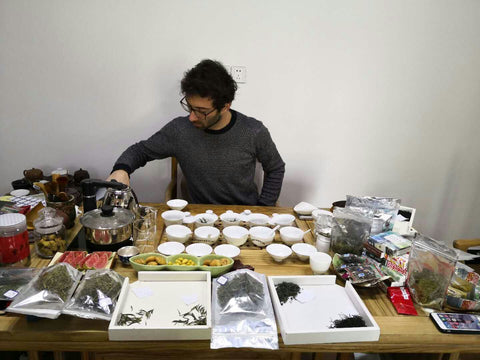
Surrounded by tea, and ready to begin the tasting.
Five qualities of Guzhu Zi Sun, from left to right in order of price.
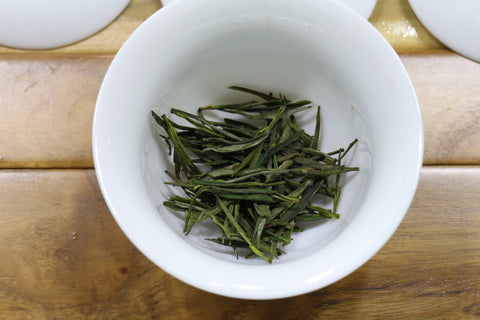

The two teas selected for Nannuoshan.
The tasting continues for hours. The Bai Chas don't convince me—too 'green', tart aftertaste. Even among the black teas, I don't find anything: some are too toasty and pungent; others insipid. Yesterday we had tasted better black teas, but unfortunately I don't have the time today to taste more.
Yimin also owns tea fields in Qian Dao Hu (Thousand Island Lake, Zhejiang), where she produces Long Jing. I taste several: warm flavours, nutty and sweet. The best of them is not the most expensive, and I decide to buy it (Cultivar: Long Jing N° 43).
Four Long Jings to compare, two from the traditional cultivar (wu niu zao) and two from a modern variant (Long Jing N° 43).
I don't have time to try all of the teas: Yimin also has plantations in Fujian, where she produces Tieguanyin, Wuyi Rock Teas, and other rarities like Zi Jin Gui, a tea halfway between a Dancong oolong and a black tea. I prepare some samples to try over the next few days.
Whilst trying the many teas, I let a cake of Guzhu Zi Sun, prepared according to Tang Dynasty methods, steep. The cake has been brewing for hours and from time to time I take a sip, and little by little add boiling water. A unique flavour—it reminds me of yellow tea, tasty, with notes of hay and dark honey. Even after hours of infusion, it is not at all bitter, and the disc has not yet begun to flake. The processing of this tea is both complex and time-consuming. Compressed green tea is very rare these days, especially of such high quality. The price is high, but I buy a small quantity anyway: such opportunities are not easily repeated.
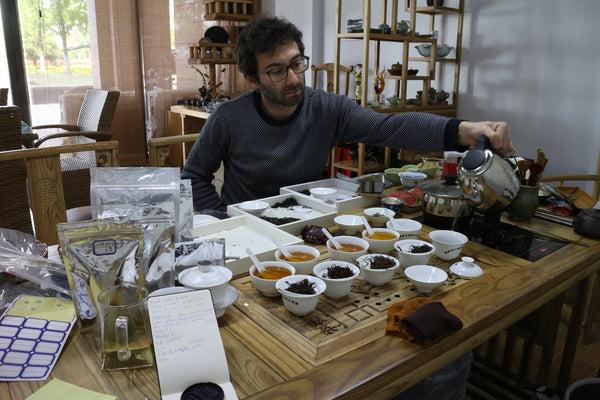

Tasting black teas.
Cake of Guzhu Zi Sun, produced according to Tang Dynasty methods, infused in a pitcher.
After lunch, I take the train to Zhengzhou, where I meet up with Benjamin. Together with a friend and fellow tea merchant, we will journey to the south of Henan, where another famous green tea is cultivated: Xinyang Maojian.
Written by Gabriele






